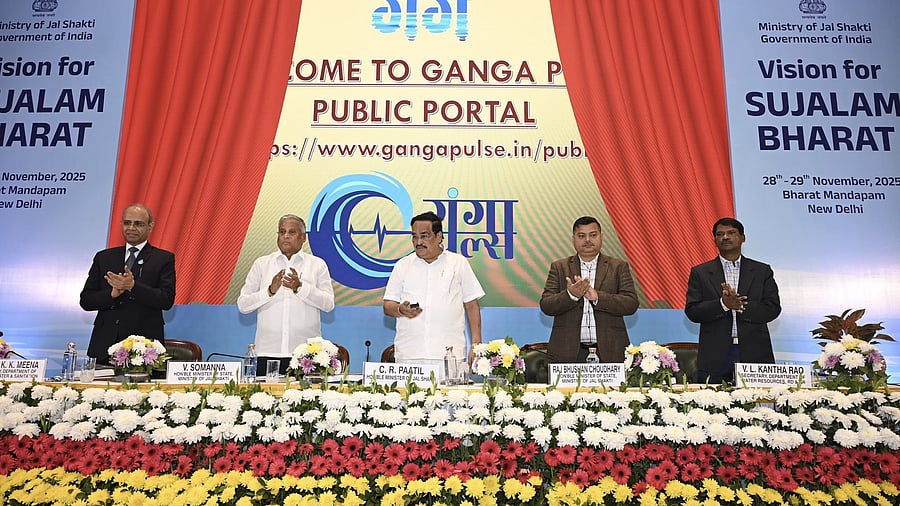
Union Minister C R Paatil during ‘Vision for Sujalam Bharat' summit.
Credit: X/@CRPaatil
New Delhi: Insisting that the building of new dams was no longer viable due to high costs, land acquisition hurdles, and shrinking river flows, Union Jal Shakti Minister C R Paatil on Friday said that Centre and states have to join hands for large-scale water conservation, community participation, and groundwater recharge.
Inaugurating the Ministry of Jal Shakti's two-day summit on ‘Vision for Sujalam Bharat,’ the Minister highlighted the difficulties in constructing new dams.
"We have more than 6,500 dams, but we still store only about 750 BCM of water. It takes 25 years and Rs 25,000 crore to build a dam. Do we have that much time? Do we have that much money?" he said.
Paatil further said the high cost, land acquisition hurdles, and shrinking river flows are key hurdles in pursuing a dam-based water storage strategy.
The minister urged states to align with the Centre's push for conservation and emphasised the need for collective action.
He noted that while India has 18 percent of the world's population and livestock, it has access to only 4 percent of global freshwater resources.
The government has shifted focus to large-scale water conservation, community participation, and groundwater recharge through the ‘Jal Sanchay Jan Bhagidari’ (JSJB) initiative and the Jal Shakti Abhiyan, he said.
The minister highlighted the "rapid expansion" of JSJB structures, crediting citizens for 'translating the prime minister's words into action".
"In the first 10 months, against the target of 10 lakh structures, people built 27.5 lakh," he said, adding that this year's goal was one crore structures.
Paatil also cited examples from Gujarat and Rajasthan to illustrate the impact of community-led efforts. In Banaskantha, he said, the NGO Vantara and local farmers helped build 30,000 recharge structures, reviving drying wells.
V Somanna, Minister of State for Jal Shakti, said Karnataka's Narayanapura Left Bank Canal SCADA (Supervisory Control and Data Acquisition) system as an example of technology improving efficiency, and to the ancient stepwell at the Ayodhya temple as a reminder that traditional structures can offer sustainable models even in hard-rock areas.
